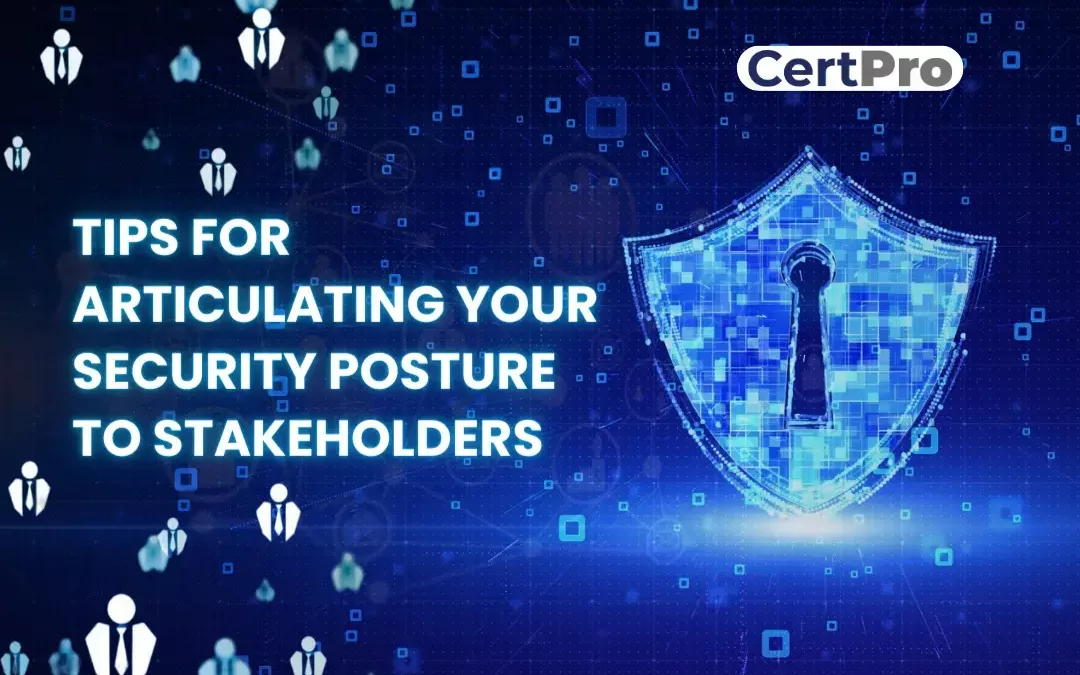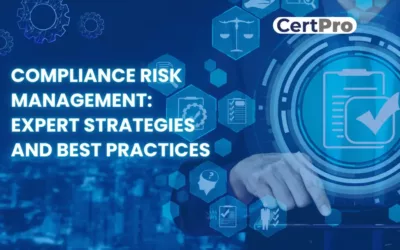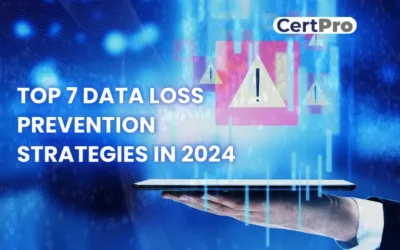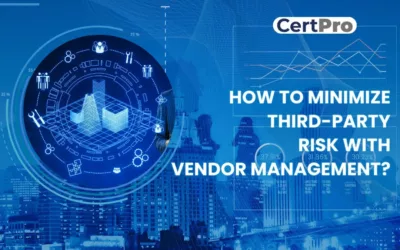Cybersecurity is now a top-tier priority for any Organization. Data breaches can ruin the entire company, destroy customer trust, and damage reputation. However, companies can find decision-making difficulties because stakeholders, board members, department heads, and investors often come from different backgrounds. Likewise, they have limited technical knowledge to understand the whole process. Thus, security professionals might need help communicating complex technical aspects with decision-makers. The critical question is, how do you effectively communicate your company’s security posture – the overall strength of your defenses – to a non-technical audience?
This blog will help you bridge the gap and understand your security posture. It will guide you in articulating your security posture with non-technical individuals. Also, delve into key communication strategies for your stakeholders.
WHAT IS A SECURITY POSTURE ASSESSMENT?
As we discussed, security posture is an overall defense system that protects your organization from cyberattacks. Thus, security posture ensures your organization’s digital defense system. All the information security and tactics tools keep your organization’s information safe and secure from cyber-attacks. It includes technology infrastructure, information assets, and sensitive data privacy. Therefore, security posture is considered your organization’s digital armor. It’s a multi-layered approach that safeguards your data, systems, and infrastructure from cyber threats. Consequently, it’s a dynamic setup that constantly evolves as threats arise. Here’s a breakdown of the key elements that contribute to a robust security posture assessment, all working together to protect as a digital armor:
1. Security Controls: Security controls include technical tools like firewalls, intrusion detection systems, and data encryption. They help to identify and prevent cyberattacks. Hence, consider them the digital domain’s high walls and protectors to avoid unauthorized access.
2. Security Policies: These formal documents establish your organization’s security protocols. Again, these protocols include security access, password management guidelines, safe technology use, and responsive action to vulnerable incidents.
3. Security Awareness Training: Educating employees about the best cybersecurity practices is imperative. Thus, training programs will teach them how to identify phishing attempts, avoid malware, and report suspicious activity. Furthermore, this will give them a sense of responsibility toward the organization’s security and best interests.
4. Risk Management: It’s essential to identify and access potential system threats constantly. Subsequently, this will enable you to take corrective measures, prioritize resources, and implement targeted controls to reduce the risks.
A security posture assessment analyzes these elements, identifies any weaknesses, and provides recommendations for improvement.
WHY IS A SECURITY POSTURE ASSESSMENT IMPORTANT?
Security posture assessments are rechecking the organization’s digital defenses against cyber threats. It offers several benefits and identifies the weaknesses present in the operational process. Here’s a deeper dive into why a security posture assessment is crucial for building a strong defense strategy:
1. Identifying Gaps: A security posture assessment covers your security controls, policies, procedures, and risk management strategy. Thus, it strengthens organizational defenses by finding weaknesses. Therefore, identifying weaknesses is crucial as attackers could use them. An assessment can identify vulnerabilities and prioritize building the gap between them.
2. Quantifying Risks: An organization’s security posture is difficult for a layperson to understand. It can often create misunderstandings about the true impact of cyber threats. Therefore, a security posture assessment can help to translate this technical language. It will make it a real-world consequence. Thus, it helps your stakeholders to connect with the situation. For instance, a cyberattack can severely damage your brand reputation. Therefore, assessment can quantify the risks and emphasize the importance of compliance.
3. Demonstrate Progress: Regular security posture assessments are essential for security. They are like progress reports on an organization’s journey toward a more secure digital environment. They allow you to track improvements by comparing evaluations over time. In addition, they measure the effectiveness of security controls and identify new and emerging threats. Thus, demonstrating progress can secure ongoing support from stakeholders who realize the value of your security efforts.
Regular assessments help you identify and address weaknesses and threats. They also provide a clear track record of your commitment to maintaining a strong security posture, which is important for building trust and securing ongoing support for your cybersecurity efforts.
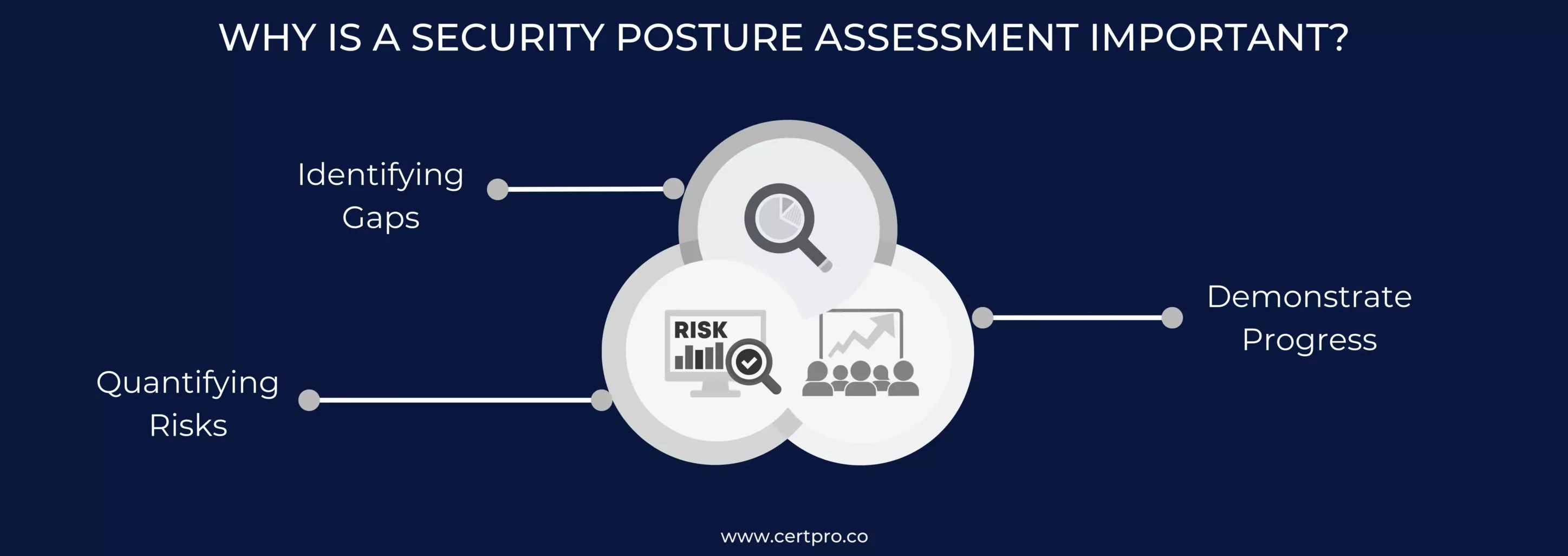
WHO NEEDS TO KNOW ABOUT YOUR SECURITY POSTURE?
Communicating your security posture doesn’t fit all instances. Like a well-designed defense system considers different threats, your message must be tailored to various audiences. Here’s who needs to be informed about your organization’s digital defenses:
1. Internal Stakeholders:
- Employees: Your organization’s employees should know about your ‘security plan’. Therefore, educate your employees about your security measures, online threats, and their role in protecting sensitive information. It will help them spot suspicious activity and follow protocols to keep things safe.
- Management: Leaders should be aware of the organization’s security posture. Explain how your security posture protects the company’s reputation and finances and facilitates smooth operation. This will help them make strategic decisions regarding cybersecurity. Moreover, the process ensures that security aligns with the business goals.
2. External Stakeholders:
- Customers: Building trust is the key to developing a relationship with customers. Therefore, communicate your security concerns with your customers so that they can feel safe and secure while dealing with your organization. Think of it as a sign on the gate saying, “Your information is safe here!”
- Suppliers: Sharing your organization’s security posture with vendors and suppliers enhances business reputation. While sharing your information, explain how your security posture protects the company’s reputation by securing the customer’s data. This will create a safe, collaborative environment and ensure data security.
- Regulatory bodies: Every industry is bound to follow specific industry regulations. Hence, clearly explaining your security posture demonstrates that you follow those regulations. Furthermore, it ensures that your organization follows the data safety and security law. It showcases the commitment of the service providers toward data safety.
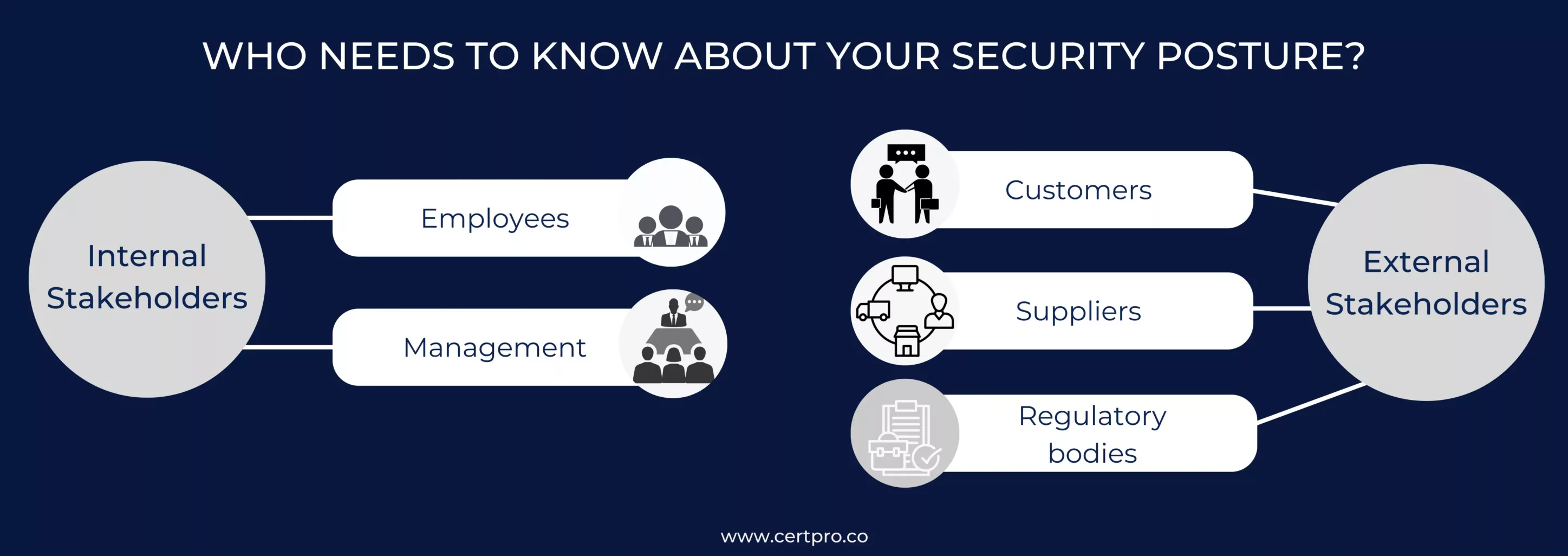
HOW DO YOU ARTICULATE A SECURITY POSTURE FOR YOUR STAKEHOLDERS?
As discussed earlier, an organization’s security posture can be complex for stakeholders. Here are some tips for communicating your security posture in a clear, concise, and impactful way:
1. Use Simple Language: While communicating your security posture to your executives, board members, and non-technical teams, focus on your language. Instead of explaining the technical terms of the security posture, talk about how it can protect the company’s reputation. In addition, discuss the method and how it safeguards the company from legal trouble and fines. Furthermore, it explains how security measures protect their personal information and make the digital workplace safe.
2. Build Confidence: Stay calm with the technical terms. Instead, emphasize the benefits of a strong security posture more. Knowing your protected data enables everyone to work with great peace of mind. Constant assessments help your company prevent costly data breaches. Think of it as an investment that saves money in the long run. It’s also important to know that customers value businesses that prioritize data security. Thus, minimizing disruptions from cyberattacks keeps your business running and builds confidence among the stakeholders.
3. Discuss with Relevant Data: Always keep your message relatable. Talk about recent high-profile data breach cases and the consequences they faced. In addition, you can show them pictures of these instances to make the conversation genuine and authentic. This is one of the effective ways to communicate with your stakeholders about your security posture. It personalizes the risks and makes them think about what is security posture and why security posture is vital.
4. Focus on Actionable Steps: Don’t just talk about the problems; present the solutions from your end. Always take a proactive approach. Additionally, outline the key elements of your security postures and your planned improvements based on the assessment. This will help focus on the actions taken during the crisis period. Therefore, acting quickly on potential threats could save you time and loss.
5. Interactive Conversation: Discussion on what is a security posture should not be a one-way street. Be open to questions from stakeholders. It shows transparency and allows you to address any concern from their end. Consequently, an open conversation always solves half of the problem by ensuring everyone’s on the same page.
Final Thoughts
Articulating an organization’s security posture can substantially change its competitive edge. It has a positive impact on the trust and reliability of your organization. Technological advancements and innovations are crucial for attracting customers in today’s competitive landscape. Therefore, articulating the security measure improves the brand reputation and assures customers and stakeholders of cybersecurity and risk mitigation. Following these tips, you can transform a complicated security posture into a compelling narrative. Thus, the technical concept will indeed connect with stakeholders. This will help you secure support and maintain a robust digital defense in your organization.
FAQ
What are the signs that security posture requires attention?
Warning signs can include frequent phishing attacks targeting employees, outdated software without security patches, or a lack of clear data security policies. Additionally, it might indicate a weak posture if employees are unsure of handling sensitive information or haven’t received proper security training.
What resources can help us learn more about security posture?
Many resources are available online and from industry organizations. Consider consulting with a cybersecurity professional to assess your specific needs.
Security assessments sound expensive. Are there ways to save money?
Regular assessments help prevent expensive data breaches in the long run. They also progress towards a more robust security posture, which can help secure ongoing support and avoid future costs.
I don't want to scare stakeholders with security threats. How can I present the importance of security posture positively?
Security posture is an investment. Frame it to prevent costly data breaches, minimize disruptions, and build customer trust. Emphasize the peace of mind that comes with knowing your data is safe.
Does a strong security posture guarantee complete security?
No, but it significantly reduces the risk. By making it harder for attackers, you deter them and protect your valuable data.

About the Author
BHOOMIKA JOIS
Bhoomika Jois is a creative content writer specializing in compliance, ISO 27001, GDPR, and SOC 2. As a Social Media Marketing Specialist, she amplifies her engaging content. Bhoomika’s knack for simplifying complex topics makes compliance and cybersecurity accessible to all.
COMPLIANCE RISK MANAGEMENT: EXPERT STRATEGIES AND BEST PRACTICES
Compliance risk considers the organization's potential legal, material, and financial losses due to compliance failure. Thus, compliance risk is known as integrity risk. Organizations of all sizes are exposed to compliance risk. Hence, compliance failure results in...
TOP 7 DATA LOSS PREVENTION STRATEGIES IN 2024
In the contemporary business landscape, data is the cornerstone of organizational vitality. Businesses leverage data extensively to inform decisions, maintain competitiveness, and foster expansion. Nonetheless, they encounter multifaceted challenges emanating from...
HOW TO MINIMIZE THIRD-PARTY RISK WITH VENDOR MANAGEMENT?
In today's interconnected business landscape, third-party vendors play an important role in accelerating growth and improving operational efficiency for enterprises across industries. However, increasing reliance on external partners entails an increased level of...

